Key signatures are an essential element of music theory, helping you to define the tonality of a song and indicate which notes will be sharp or flat.
Plus, they let you know exactly what scale is being used as well.
As a music producer, understanding all about key signatures is super beneficial.
It will improve your ability to read, write, and compose music 一 making your production process and emotional impact more efficient.
Here’s what you’ll learn in this article:
- What is a key signature ✓
- How key signatures are notated ✓
- Major key signatures vs minor key signatures ✓
- Using the Circle of Fifths ✓
- Identifying different key signatures ✓
- Sharp notes vs flat notes (+ the importance of sharps and flats) ✓
- Major key identification/minor key identification ✓
- Key signatures and chord progressions ✓
- Using key signatures ✓
- Enharmonic key signatures ✓
- Software and apps ✓
- Modulation and key changes ✓
- Much more ✓
After this article, you’ll know everything about key signatures and how to use them effectively every time.
This way, you can compose, produce, and arrange music like a true professional and your tracks will always be harmonically consistent.
So, let’s dive in…
Table of Contents
What is a Key Signature?

A key signature is a set of sharp symbols (♯) or flat symbols (♭) placed at the beginning of a musical staff.
They tell you which notes will be sharp notes or flat notes throughout the entire piece.
For example, if a piece has one sharp, it will be F# 一 meaning every F note should be played as F#.
On the same note, if the key signature has two sharps (F# and C#) every F and C note will be played as F# and C#.
Pretty simple, right?
In written music, key signatures avoid the need to write sharps or flats next to each note, which saves a ton of time and space.
Instead of writing sharp symbols every time an F or C appears, the key signature does it once at the beginning, period.
This makes reading music faster and more efficient.
Basically, understanding what is a key signature helps you understand the overall structure of the music, and if you want to create harmonically on point tracks, this knowledge is key.
We’ll break it all down throughout the article, don’t worry.
NOTE: For sharp key signatures, the key is a half step above the last sharp. For a flat key, the second-to-last flat is the key. Remember, flat keys and sharp keys help you determine the key of a piece, so they’re very important.
Major and Minor Key Signatures
Key signatures, as we touched upon, can represent both major keys and minor keys of course. Understanding the difference between them, as a music producer or general musician, is essential. So, let’s break it down.
-
Major Key Signatures

Major key signatures create bright and uplifting sounds, following a specific pattern known as the major scale, consisting of seven notes.
For example, the C major scale (which consists of the seven notes C-D-E-F-G-A-B) contains no sharps or flats 一 making it simple to read and play.
G major, on the other hand, has one sharp (F#), while D major has two sharps (F# and C#).
To identify major key signatures, you can look at the number and order of sharps or flats…
For example, E major has four sharps:
- F#
- C#
- G#
- D#
The order of sharps always follows the same sequence, which is (F, C, G, D, A, E, B) and, similarly, the same order of flats is (B, E, A, D, G, C, F).
For example, F major has one flat (Bb), and Bb major has two flats (Bb, Eb).
All major keys have a unique combination of sharps or flats, and by memorizing the order of sharps and flats, you can quickly identify the key of any piece of music.
For instance, if a key signature has three sharps (F#, C#, G#), it is A major.
Knowing these patterns is key for understanding and creating music in different keys.
-
Minor Key Signatures
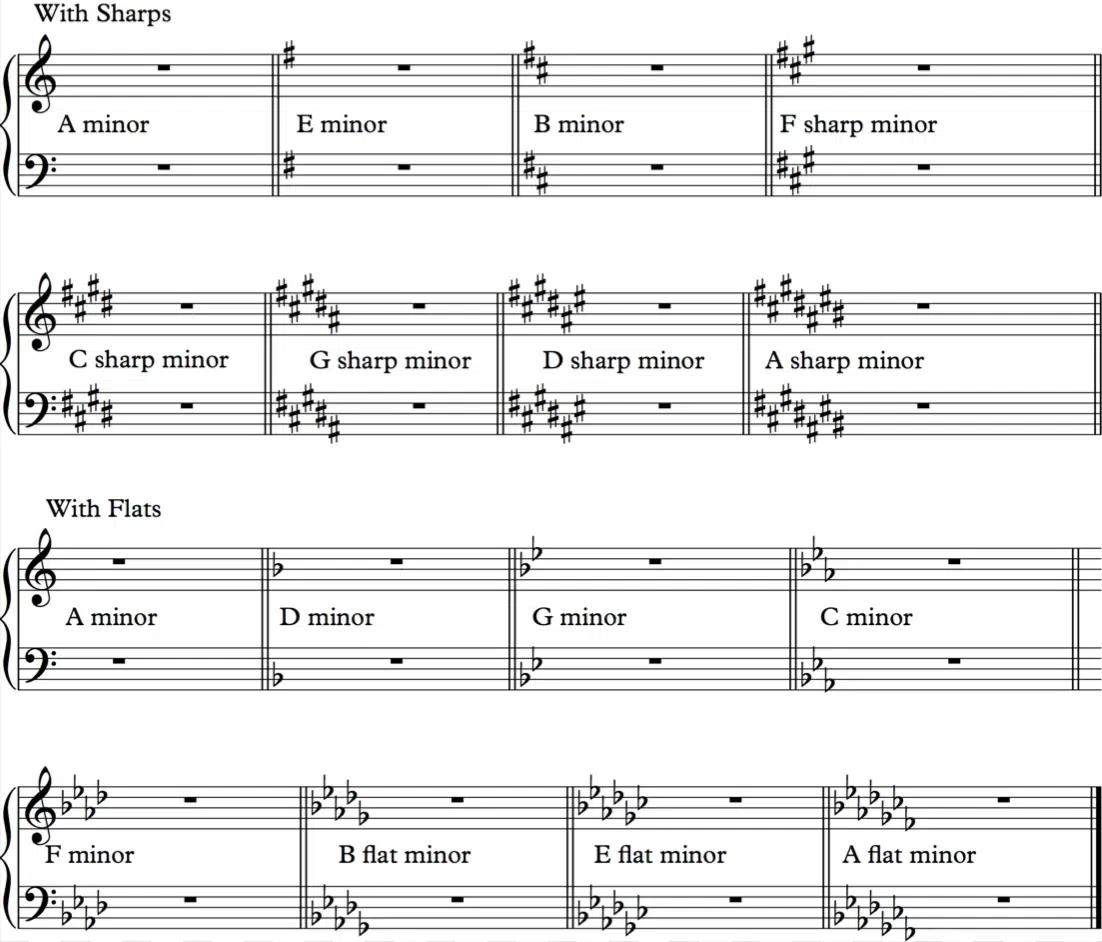
Minor key signatures are all about sadder, more dramatic tones, following a different pattern: the minor scale.
For example:
- A minor, like C major, has no sharps or flats
- E minor has one sharp (F#)
- B minor has two sharps (F# and C#)
To identify minor key signatures, you’ll need to know the relative minor relationship.
Each major key has a relative minor key that shares the same key signature.
For instance, A minor is the relative minor of C major, and E minor is the relative minor of G major (very simple stuff).
The relative minor key is found by counting three half steps down from the major key.
For example, in D major (two sharps), the relative minor is B minor and in A major (three sharps), the relative minor is F# minor.
Understanding relative minor keys will help you not only know what is a key signature, but master them in no time as well.
It’s super important for creating music that explores different emotional tones and textures, which is what it’s all about.
Circle of Fifths: Breaking it Down
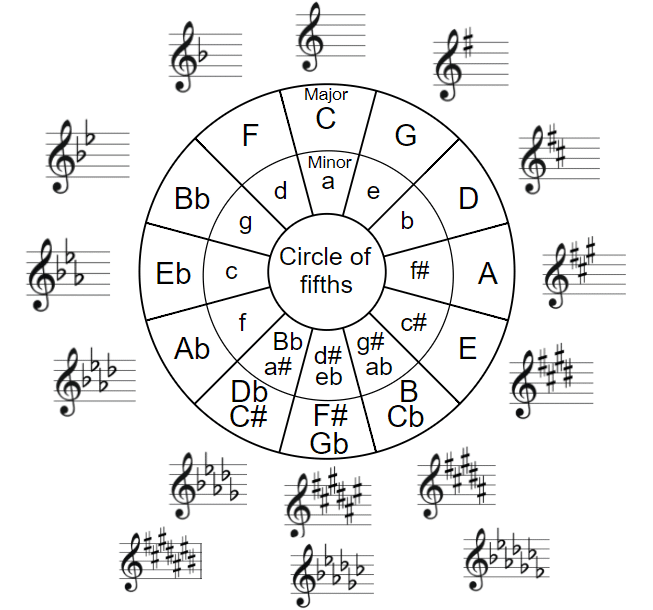
The Circle of Fifths is a visual tool that can help you understand the relationship between different key signatures.
It’s a circle (shown above) where each particular note is exactly a fifth apart from the next 一 creating a foolproof progression of key signatures.
For example, moving clockwise from C major (no sharps or flats) to G major adds one additional sharp note.
Moving counter-clockwise from C major to F major adds one flat.
This pattern continues around the circle, which gives you a clear representation of all major and minor key signatures.
The Circle of Fifths helps you see the pattern of adding sharps or flats as you move around the circle…
For instance:
- The keys with sharps are added in the order of: F, C, G, D, A, E, B.
- The keys with flats are added in the order of: B, E, A, D, G, C, F.
The circle also shows the relative minor keys which, as we just talked about, helps you find minor key signatures quickly.
For example, the relative minor of G major is E minor.
If you’re writing music or even making beats, understanding the Circle of Fifths is absolutely essential for breaking down and taking advantage of key relationships.
And having smooth transitions between your keys, of course.
-
Pro Tip: Using the Circle of Fifths to Easily Find Key Signatures
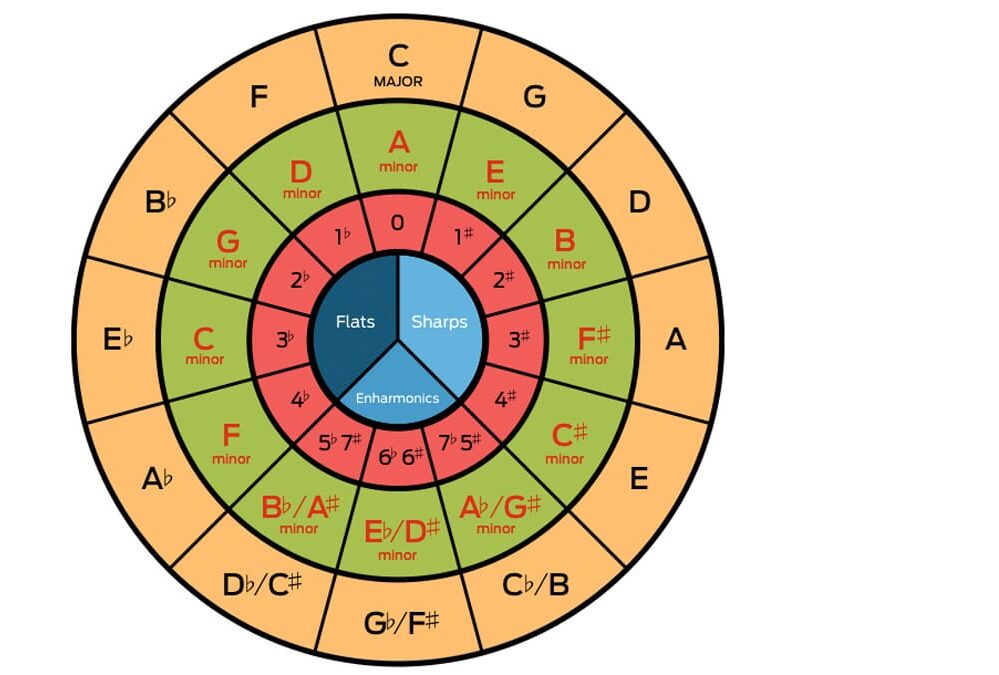
To find a key signature using the Circle of Fifths, locate the tonic note on the circle and count the number of sharps or flats in the key signature.
For example, D major has two sharps: F# and C#.
Look at the circle and see that D major is two steps clockwise from C major, which confirms the two sharps.
For minor keys, find the relative minor key on the circle… for instance, B minor is the relative minor of D major, so it also has two sharps.
The Circle of Fifths makes it easy to identify key signatures and understand their unique relationships better.
Bottom line, for ultimate harmonic consistency when you’re composing or transposing music, the Circle of Fifths is key (no pun intended).
Identifying Key Signatures
To identify key signatures like a boss, it’s essential to understand both the visual symbols and the theory behind it. So, let’s get into how to identify major key signatures and minor key signatures.
-
Identifying Major Key Signatures
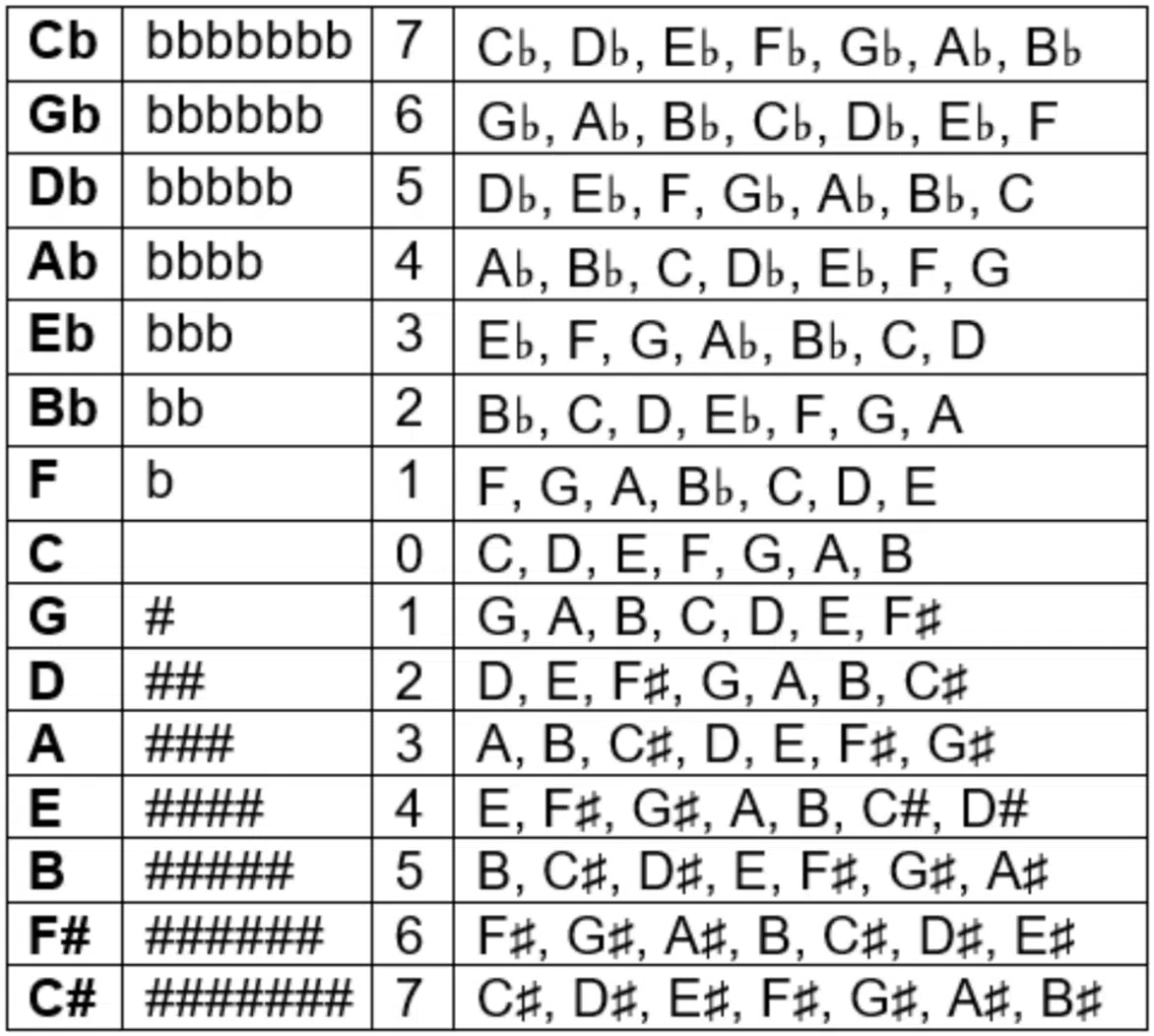
To identify major key signatures with sharps, look at the last sharp in the key signature and raise it by a half step (one semitone).
For example, in the key signature with two sharps (F# and C#), the last sharp key is C#.
Raising it by a half step gives you D 一 so the key is D major.
In a key signature with three sharps (F#, C#, G#), the last sharp key is G#, so raising it by a half step gives you A, meaning the key is A major.
For flat key signatures, look at the second to last flat…
For instance, in the key signature with three flats (Bb, Eb, Ab), the second to last flat is Eb, so the key is Eb major.
NOTE: If there are four flats (Bb, Eb, Ab, Db), the second to last flat is Ab. So, the key is Ab major. Knowing these methods allows you to quickly identify the major key of any piece of music.
And better understand what is a key signature in the first place, of course.
-
Identifying Minor Key Signatures
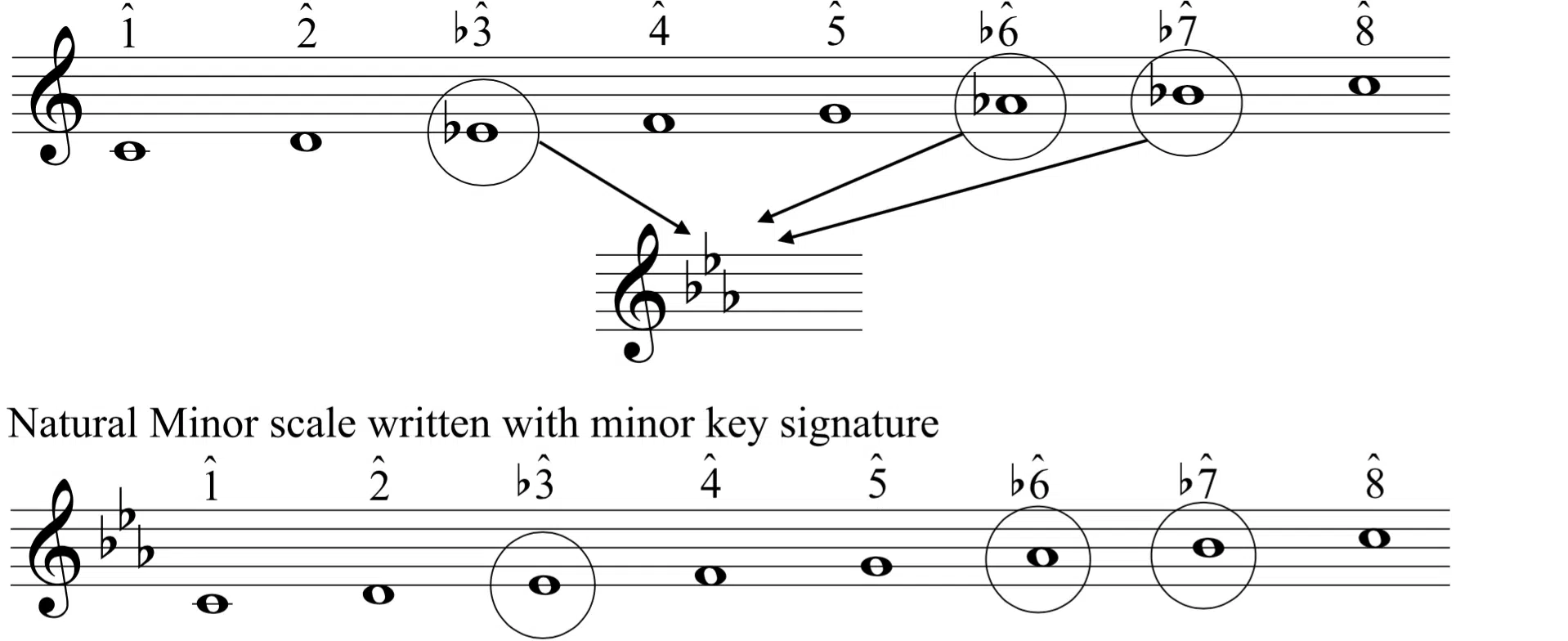
Identifying minor key signatures is, as we touched upon, all about knowing the relative minor relationship.
The relative minor key shares the same key signature as its major counterpart but starts on a completely different note.
For example, to find the key of E minor, identify its relative major, which is G major (one sharp).
Since E minor shares the same key signature as G major, it also has one sharp.
To find the relative minor, count three half steps down from the major key, for example:
- In D major (two sharps), count three half steps down to B; indicating B minor.
- In A major (three sharps), count three half steps down to F#; indicating F# minor.
Understanding relative minor keys helps you identify minor key signatures quickly.
And if you’re looking to create or better understand all different emotional tones, textures, and combinations, you’ll certainly need to nail this down.
Key Signatures and Chord Progressions

When it comes to chord progressions, key signatures have a big role.
Chord progressions are a series of chords played in a sequence, and the new key signature dictates which chords naturally fit within the progression.
For example, in the key of C major, common chord progressions include I-IV-V (C-F-G) and ii-V-I (Dm-G-C) 一 creating a sense of resolution and movement.
In a minor key, minor progressions like i-iv-V (Am-Dm-E) are frequently used.
Understanding key signatures helps in creating these chord progressions and enhances your skills.
By knowing the key signature, you can choose chords that fit within the key and turn up that harmonic flow.
-
Pro Tip: Using Key Signatures in Composition
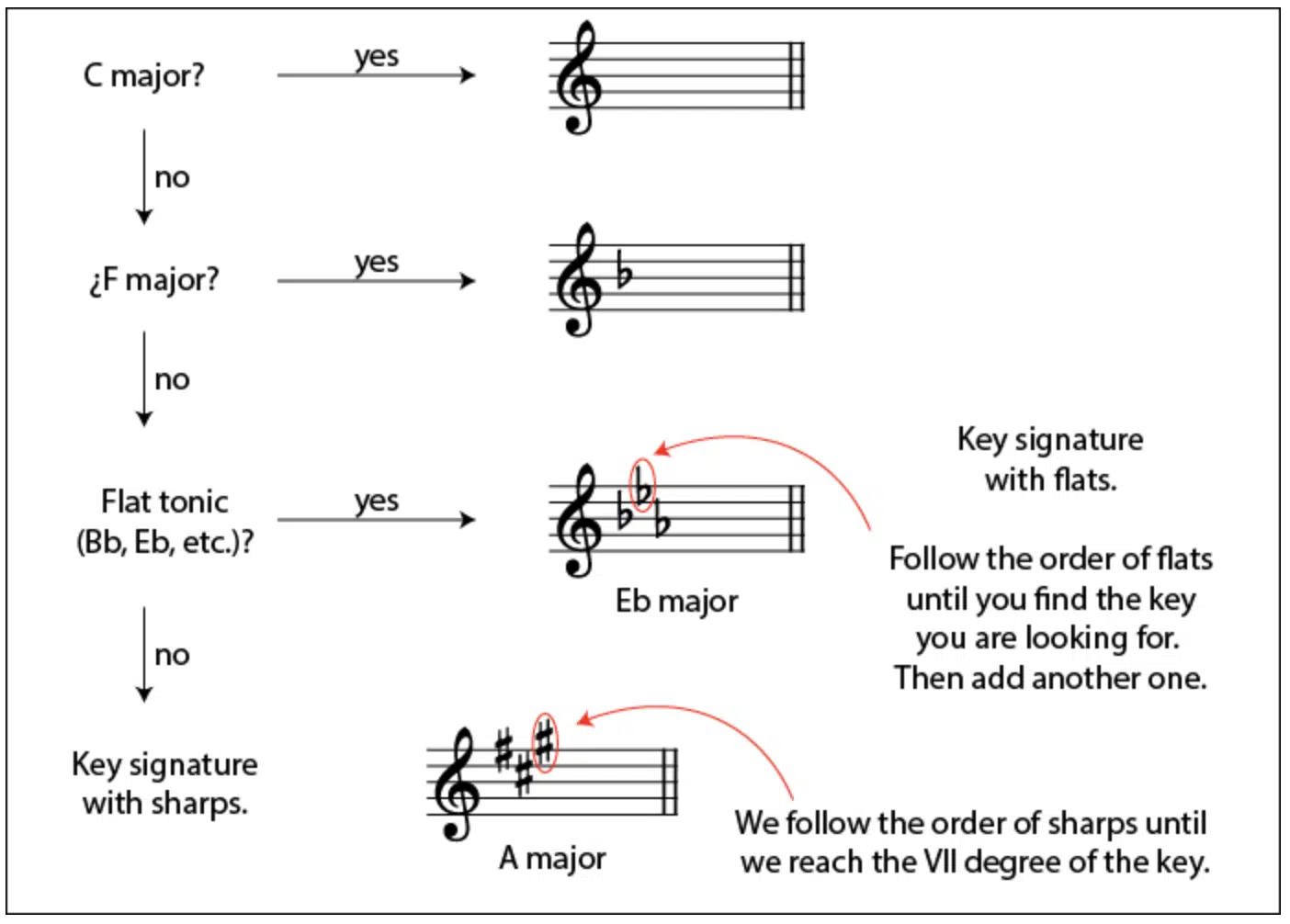
Using key signatures can seriously streamline your writing process and understanding of different emotions through sound.
By establishing a key signature at the beginning of your piece, you set the tonal outline 一 making it much easier to choose chords and melodies that fit within that key.
For example, if you’re writing in G major, you know that the F# note will be sharp throughout the piece.
It’ll help you focus on creating melodies and harmonies that blend perfectly.
Side note: When it comes to sharp key signatures, the first one is the key of G, or its relative minor, which is E minor (Em).
For instance, if you’re composing in C major, you won’t have to worry about sharps or flats 一 making it ideal for beginners.
If you decide to write in E major, you’ll have four sharps: F#, C#, G#, and D#.
Understanding what is a key signature and using them properly, you can guarantee your compositions will stay within the tonal framework you’re aiming for.
Enharmonic Key Signatures
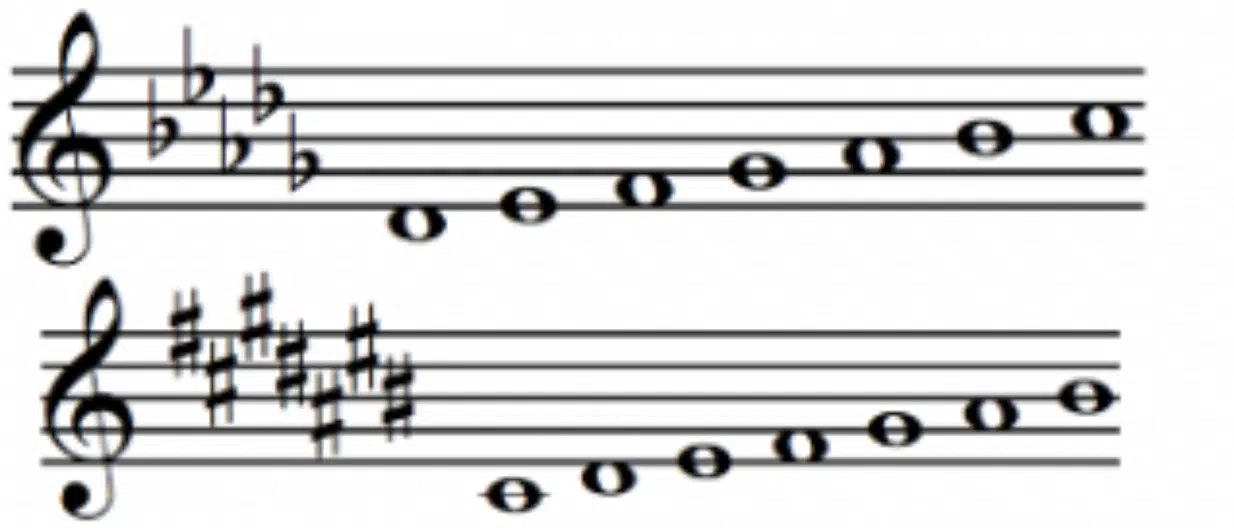
Enharmonic key signatures are pairs of key signatures that sound the same but are written differently like:
- C# major (seven sharp notes)
- Db major (five flats)
They sound identical but use different notes (not the same notes) to represent the same pitches 一 interesting, right?
This can be super useful when transposing music, modulating between keys, or working with instruments that favor certain key signatures.
Like the trumpet, which is often easier to play in flat keys.
Knowing that C# major and Db major are the same can help you choose the most logical key signature for your composition (like your The Circle of Fifths in the flesh).
For instance, while C# major might be more complex to read due to the number of sharps, Db major might be easier for certain instruments to play.
Understanding this can help you choose the best key signature for both readability and playability 一 ensuring a smoother overall process.
Software and Apps for Key Signature Mastery
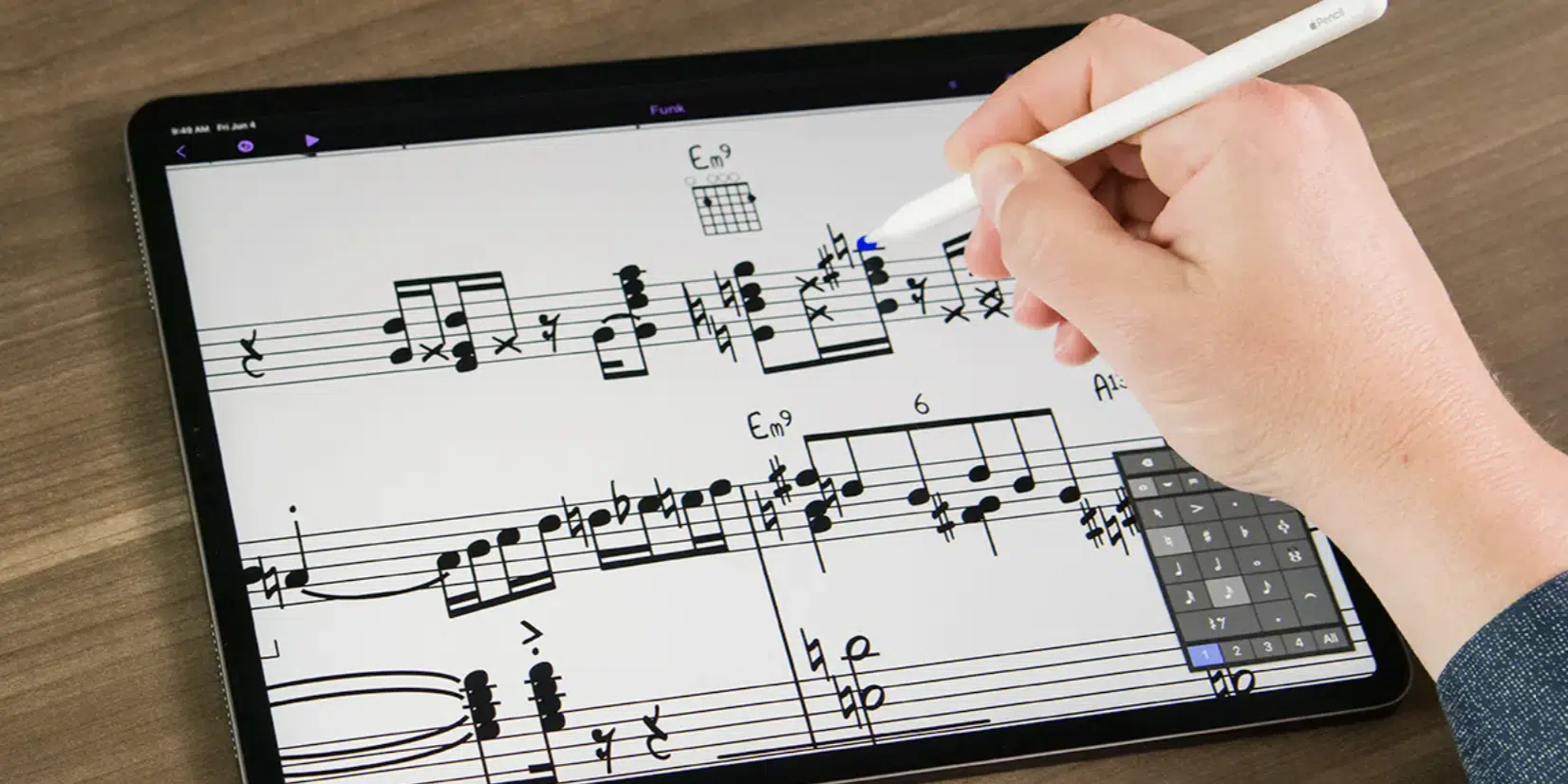
Several software and apps can help you master only key signatures, and here are my personal favorite:
Sibelius, which is a professional notation app that helps you write and understand any key signature you’re wondering about.
MuseScore is another popular (free) choice with extensive tools for helping with key signatures 一 perfect for beginners and experts alike.
EarMaster is an app designed to train your ear and improve your ability to recognize key signatures, enhancing your overall musical skills.
Another super useful tool to help you learn what is a key signature is Tenuto, an app offering exercises and tutorials on:
- Key signatures
- Music theory
- Western music/written music essentials
- Flat notes
- Sharp notes
- Etc.
They can help you successfully read key signatures, write key signatures, and truly understand what is a key signature.
For example, you can use EarMaster to practice identifying key signatures by ear, while Sibelius and MuseScore can help you notate music with accurate key signatures.
They can seriously enhance both your theory and production skills.
-
Bonus: Modulation and Key Changes
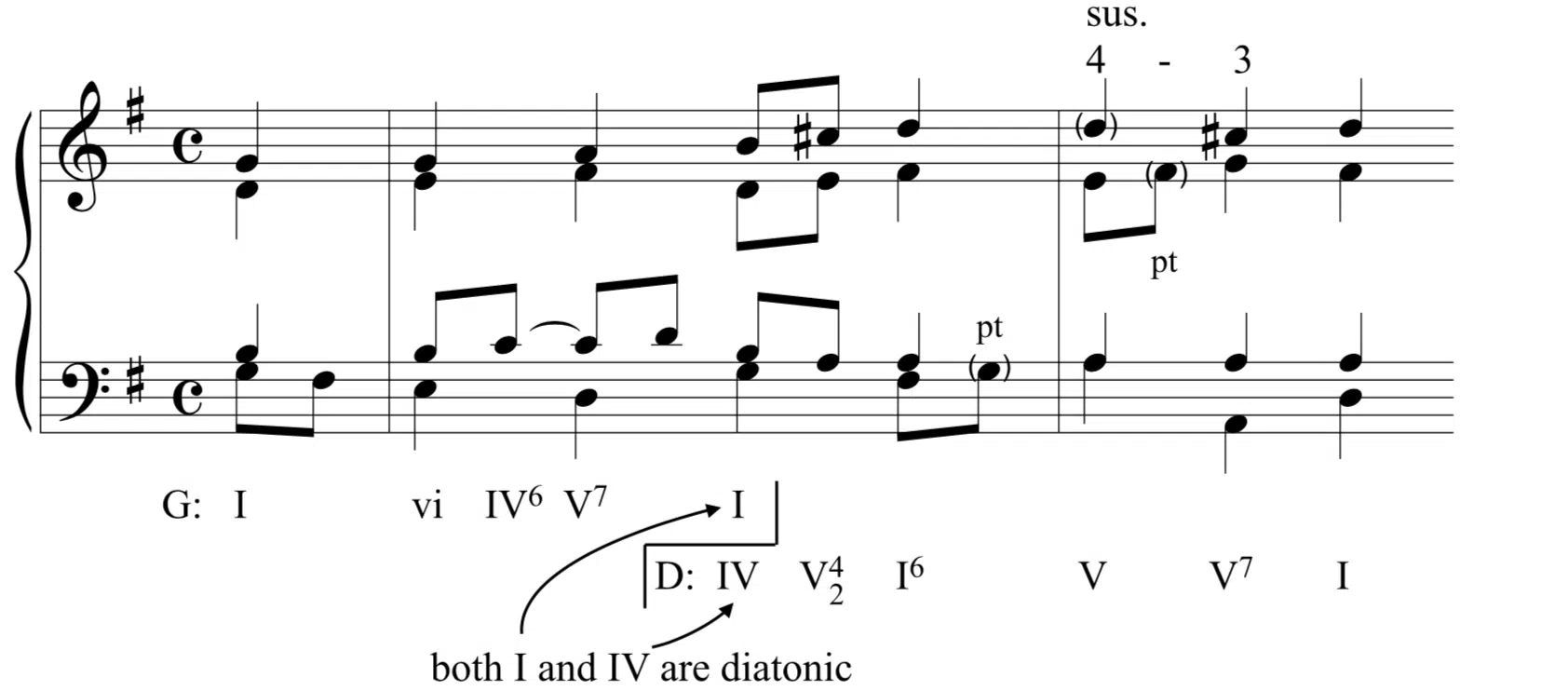
In a diatonic common chord modulation, the pivot chords will be diatonic in both keys.
Modulation is the process of changing from one key to another within an entire piece of music, which can add variety and interest to your tracks.
To modulate smoothly, you’ll need to understand the relationship between different key signatures.
For example, a common modulation technique is to move to a closely related key, such as from C major to G major (adding one sharp).
Another technique is pivot chord modulation, where a chord common to both the original and new key signature is basically a bridge.
For instance, in modulating from C major to A minor, the chord E minor (Em) can act as the ‘pivot chord,’ as it fits both keys.
Understanding modulation and key changes can greatly enhance your music production skills 一 allowing you to create more dynamic and engaging tracks.
By mastering these techniques, you can introduce unexpected twists so listeners will stay engaged and not get bored at any point.
What is a Key Signature: Final Thoughts
Key signatures are ‘key’ elements that help you understand the overall structure of a piece and determine which notes are sharp or flat.
Knowing what is a key signature can enhance your ability to read, write, and produce music big time.
If nothing else, remember you have to know the fundamentals of music theory (like key signatures) to be able to break the rules efficiently.
On that note, if you’re looking to deepen your understanding of music theory and improve your songwriting skills, check out the #1 Songwriting Secrets Course in the industry right now.
It will help you know the ins and outs of writing hit songs consistently and further your understanding of music theory in every way.
If you want to become a top songwriter, this course is the key, seriously.
With over 9+ hours of in-depth training videos for musicians at any level, you’ll be able to master this process and skyrocket to the top.
So, go use your new knowledge of key signatures and remember to never stop learning, growing, and enhancing your skills.
It’s the key to enhancing your music career and perfecting your compositional process.
Until next time…







Leave a Reply
You must belogged in to post a comment.